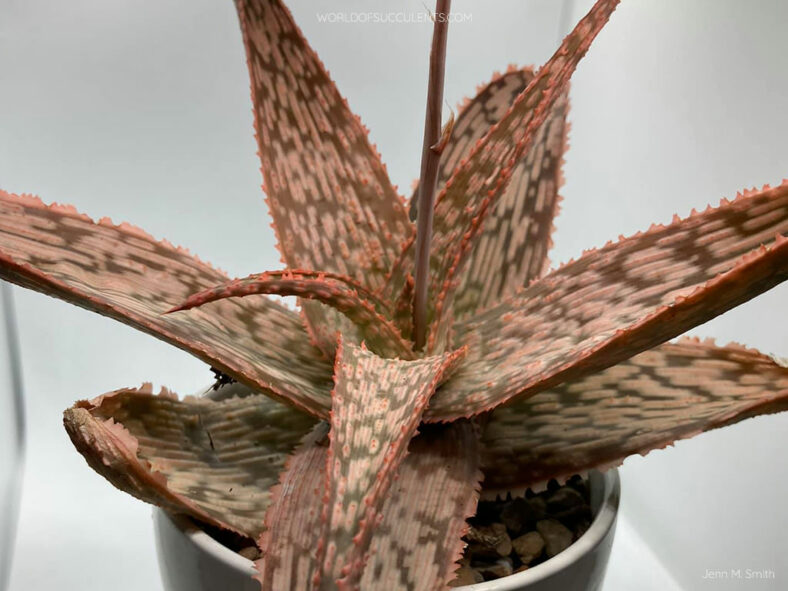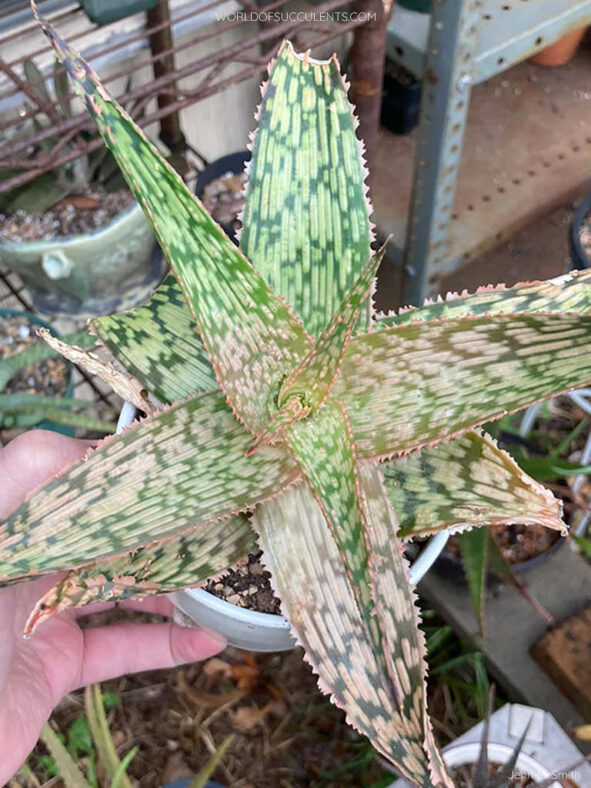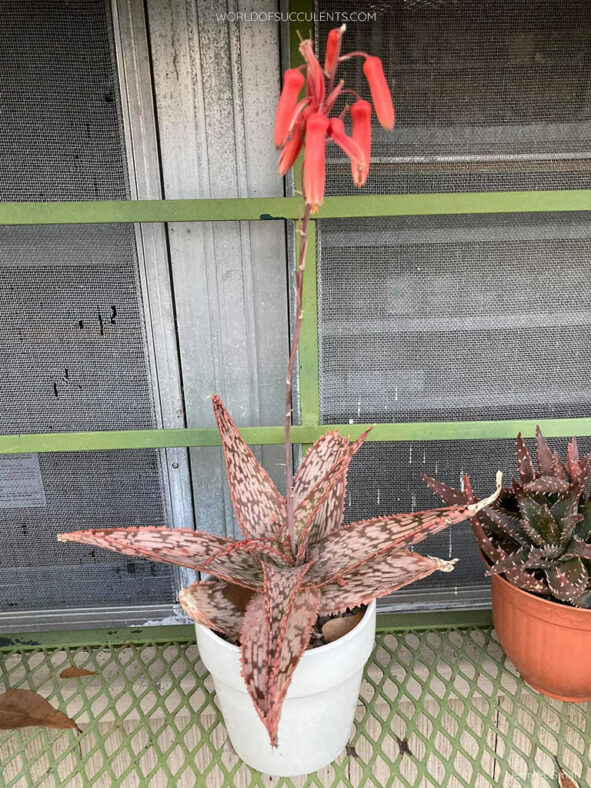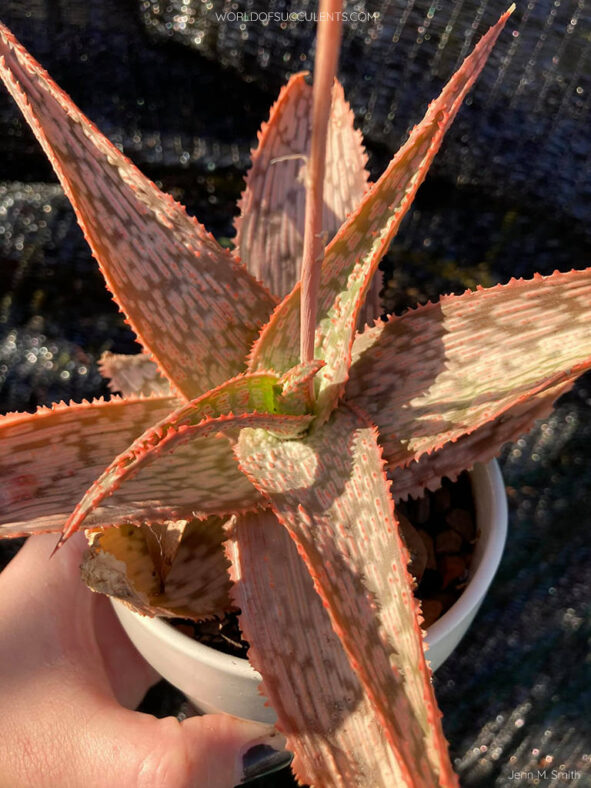Aloe 'Mauna Kea' is a star of the Star Aloe® collection developed by Altman Plants.
Scientific Name
Aloe 'Mauna Kea'
Scientific Classification
Family: Asphodelaceae
Subfamily: Asphodeloideae
Genus: Aloe
Etymology
The hybrid name refers to Mauna Kea, an inactive volcano on the island of Hawaiʻi.
Origin
Aloe 'Mauna Kea' is a patented hybrid (PP32603) created by Renee O'Connell. It is a product of a planned breeding program by Altman Plants and results from a cross made in January 2017 at a commercial greenhouse in Vista, California, United States.
Description
Aloe 'Mauna Kea' is an attractive small succulent that forms star-shaped rosettes of eruptively colorful leaves. The rosettes can grow up to 12 inches (30 cm) in diameter and produce offsets from the base, creating a clump with age. The deltoid leaves can measure up to 8 inches (20 cm) long and 0.6 inches (1.5 cm) wide. They are green with fiery, serrated edges and raised white ridges along the surfaces. The leaves turn pinkish to reddish when the plant is grown in bright sunlight.
During summer and fall, Aloe 'Mauna Kea' produces loose clusters of tubular red flowers on erect, usually unbranched stalks that can grow up to 20 inches (50 cm) tall.

How to Grow and Care for Aloe 'Mauna Kea'
Light: When growing Aloe 'Mauna Kea' indoors, place it in a window with plenty of bright indirect light. Rotate the pot once or twice a week to ensure all sides of the plant receive equal lighting. Outdoors, the plant prefers light shade, especially during the hottest parts of the day.
Soil: Great drainage is essential for growing this plant because too much moisture for an extended period can cause root rot. Use commercial soil for succulents, or make your own well-draining mix.
Temperature: When temperatures shift below 50 °F (10 °C), it is time to bring this plant inside. It tolerates heat fairly well but will not survive a hard frost. Aloe 'Mauna Kea' grows best in USDA Plant Hardiness Zones 10a to 11b, with average minimum winter temperatures ranging from 30 to 50 °F (-1.1 to 10 °C).
Watering: This plant needs regular watering but can tolerate drought conditions for short periods. Water deeply, but only when the soil is completely dry to the touch, and do not let water stand in the rosettes. Cut back on watering during the winter months.
Fertilizing: Although it generally does not require fertilizer, this plant will benefit from extra nutrients. Use a water-soluble fertilizer diluted to half the recommended strength.
Repotting: Repot only as needed during spring. Pick a container that is one size larger and has drainage holes.
Propagation: To propagate Aloe 'Mauna Kea', remove the offsets from a mature plant from late spring to early summer.
Learn more at How to Grow and Care for Aloe.
Toxicity of Aloe 'Mauna Kea'
Aloe 'Mauna Kea' is not listed as toxic for people and pets.
Links
- Back to genus Aloe
- Succupedia: Browse succulents by Scientific Name, Common Name, Genus, Family, USDA Hardiness Zone, Origin, or cacti by Genus
Photo Gallery
Click on a photo to see a larger version.


